Samsung Galaxy S6 edge vs Galaxy Note 4: first look
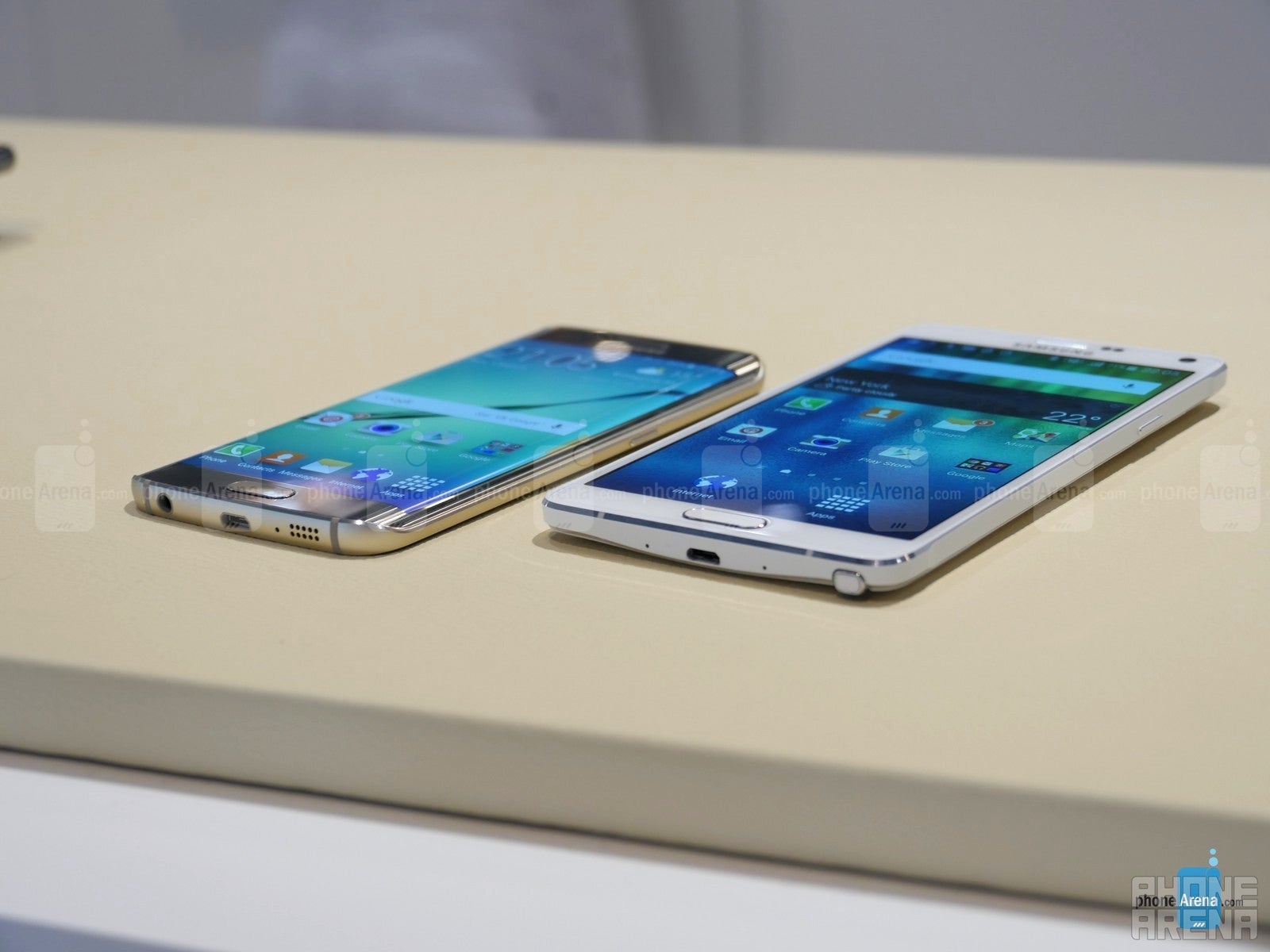
Since the Galaxy Note Edge was introduced, we were almost sure that Samsung will try to milk the concept of the rounded, overlapping display to the fullest. After all, it was arguably the first manufacturer to exploit this tech and the public seemed to favor the ingenious, sloping trait of the gadget. This new undertaking is seemingly here to stay - the Galaxy S6 edge is here and it has borrowed something from the Note Edge, multiplied it by two, and arrived in full glory with a sleek and intriguing dual-sloping display. Is this enough to make it stand out from the rest of Sammy's top-tier pack, led by the Galaxy Note 4? Read on to find out!
With its sleek, exquisite design, the Galaxy S6 edge is a phone that stands out. Gone is the plasticky feel of Samsung's previous offerings - we have two sheets of Gorilla Glass 4 at the front and the rear, held together by an "aircraft-grade" aluminum frame, which has successfully accommodated the hardware keys at the sides. Similar to the Galaxy S6, the S6 edge tends to hold a lot of fingerprints, but that's a price exterior design lovers will most likely be quite willing to pay, especially if such an interesting display is a part of the equation.
In the meantime, the Galaxy Note 4 is a bridge to Samsung's past - don't get us wrong, it's also a premium-feeling device, but the plastic elements at the front and the faux leather rear cover are no match for the Galaxy S6 edge's exterior. At least, it comes sans the hate-it-or-love-it fake stitching that was present in the Note 3. However, the frame of the phablet is made of aluminum and adds up to the premium feel. The Note 4 also comes with an S Pen and a removable battery, something that the Galaxy S6 edge is devoid of.
Android 5.0 Lollipop with TouchWiz is what you'd find on both Samsung top-tier beasts. As we already mentioned in our hands-on of the Galaxy S6 edge, it's tough to say whether it's the best iteration of TouchWiz ever, though it certainly feels faster. Moreover, we can certainly agree that it’s vying for a cleaner looking interface, one that also goes back to a simpler set of software features. It's still the good old feature-packed UI that we're used to, meaning it will stutter here or there, but dressed in toned-down, more polished and modern guise. There is a slight, noticeable improvement over previous TouchWiz iterations.
We are assuming that Samsung has put its newest Exynos monstrosity inside the Galaxy S6 edge, the octa-core, 64-bit 7420 SoC which is based on the cutting-edge 14 nm process. It seems like Samsung isn't willing to make compromises with regards to the internals of its upcoming flagship, which will make full use of Lollipop's 64-bit capabilities.
The Samsung Galaxy S6 has a 16MP rear camera, which is similar to the ones of the S5 and the Note 4, but there is a respectable host of new features involved. One of the more intriguing ones is optical image stabilization, in addition to reat-time HDR, infrared white balance, and tracking auto-focus for the video camera. The Samsung Galaxy Note 4 is also adorned with both digital a optical stabilizations an board, which will make sure that the videos you shoot will be devoid of blur or unintentional shakiness.
Besides the mandatory cleanup work in the camera application, Samsung has made sure to upgrade its camera module a bit - the 16 MP resolution will be accompanied by a wide, F1.9 aperture now, promising to deliver better low-light image quality than that of the Galaxy S5 (its aperture was F2.2). In the meantime, the Note 4 flaunts a camera with an f/2.2 aperture, which is quite an impressive performer, recently beating an iPhone 6 and a DSLR camera (!) in our blind comparison.
At the front, the Galaxy S6 has a 5MP selfie shooter, whereas the Note 4 "only" comes with a 3.7MP one. Undoubtedly, given the appetizing specs sheets, the new flagship smartphone will be a worthy successor to the Note 4 in terms of overall selfie quality.

Design
With its sleek, exquisite design, the Galaxy S6 edge is a phone that stands out. Gone is the plasticky feel of Samsung's previous offerings - we have two sheets of Gorilla Glass 4 at the front and the rear, held together by an "aircraft-grade" aluminum frame, which has successfully accommodated the hardware keys at the sides. Similar to the Galaxy S6, the S6 edge tends to hold a lot of fingerprints, but that's a price exterior design lovers will most likely be quite willing to pay, especially if such an interesting display is a part of the equation.
At 7mm, the S6 edge is thicker than the regular S6, but it's still 1.5mm thinner that the phablet.
We're dealing with Super AMOLED displays on both the Samsung Galaxy S6 and the Galaxy Note 4. In particular, these are of the Quad HD type, translating to a resolution of 1440 x 2560 pixels. Size-wise, however, the two devices can't be more different - there's a 5.1-inch one in the Galaxy S6 edge, whereas the Note 4 sports a 5.7-inch display.
Display
We're dealing with Super AMOLED displays on both the Samsung Galaxy S6 and the Galaxy Note 4. In particular, these are of the Quad HD type, translating to a resolution of 1440 x 2560 pixels. Size-wise, however, the two devices can't be more different - there's a 5.1-inch one in the Galaxy S6 edge, whereas the Note 4 sports a 5.7-inch display.
This translates to a better pixel density for the Galaxy S6 edge - 577ppi; the Galaxy Note 4 boasts a display density of 515ppi. The new flagship is as crisp and sharp as it gets, but frankly said, there's not a noticeably-large rift between its screen and the display of the Note 4, which is also a pretty respectable champion in the display department.
Of course, we can't go on without mentioning the highlight of the S6 edge - the curved display. Honestly, though, the curved sides of the display are there for looks only and do not contribute to the overall functionality. Whereas the curved edge of the Note 4 is more for function, the edges present here are actually meant to accentuate the aesthetics. In particular, it gives the phone a uniform and seamless look, as the sides wrap around and meet together in the back. As for function, it’s not on the same level as what we get with the Note 4.
Interface and functionality
Android 5.0 Lollipop with TouchWiz is what you'd find on both Samsung top-tier beasts. As we already mentioned in our hands-on of the Galaxy S6 edge, it's tough to say whether it's the best iteration of TouchWiz ever, though it certainly feels faster. Moreover, we can certainly agree that it’s vying for a cleaner looking interface, one that also goes back to a simpler set of software features. It's still the good old feature-packed UI that we're used to, meaning it will stutter here or there, but dressed in toned-down, more polished and modern guise. There is a slight, noticeable improvement over previous TouchWiz iterations.
Paired with the impressive hardware setup, we can easily say that it's unlike any other Samsung device in the UI performance section. The Note 4 is also not a slouch, but its TouchWiz iteration is slightly more bogged up with bulk.
Similar to the TouchWiz variation on the Galaxy S6 flagman, the Galaxy Note 4 is home to a number of additional spic and span features that further complement the S Pen functionality of the phablet. Functionality-wise, both phones have their strong and weak points - S Pen with a larger silhouette for the Galaxy Note 4, and a dual-curved display for the Galaxy S6 edge, which provides you with additional information and lights up in configurable colors if you have a missed call or other event vying for your immediate attention.
Processor and memory
We are assuming that Samsung has put its newest Exynos monstrosity inside the Galaxy S6 edge, the octa-core, 64-bit 7420 SoC which is based on the cutting-edge 14 nm process. It seems like Samsung isn't willing to make compromises with regards to the internals of its upcoming flagship, which will make full use of Lollipop's 64-bit capabilities.
Speaking of the Note 4, the latter is only endowed with a "measly" Snapdragon 805 or an Exynos Octa 7 chipset. We mean no offence to the Note 4, mind you - the phablet is a power-laden monstrosity that shouldn't be taken lightly, but there's a new kid on the block.
The Galaxy S6 edge also takes a page out of Note 4's book and also flaunts the respectable amount of 3GB of RAM. Fortunately for all of us, this means better multitasking capabilities. A most welcome addition.
You get either 32, 64, or 128GB of native storage with both the Galaxy S6 edge and the Note 4, but the latter also offers a microSD card slot on board. The Galaxy S6 edge is devoid of this useful feature, which might be a deal-breaking absence for a certain breed of Android fans.
The Galaxy S6 edge also takes a page out of Note 4's book and also flaunts the respectable amount of 3GB of RAM. Fortunately for all of us, this means better multitasking capabilities. A most welcome addition.
You get either 32, 64, or 128GB of native storage with both the Galaxy S6 edge and the Note 4, but the latter also offers a microSD card slot on board. The Galaxy S6 edge is devoid of this useful feature, which might be a deal-breaking absence for a certain breed of Android fans.
Camera
The Samsung Galaxy S6 has a 16MP rear camera, which is similar to the ones of the S5 and the Note 4, but there is a respectable host of new features involved. One of the more intriguing ones is optical image stabilization, in addition to reat-time HDR, infrared white balance, and tracking auto-focus for the video camera. The Samsung Galaxy Note 4 is also adorned with both digital a optical stabilizations an board, which will make sure that the videos you shoot will be devoid of blur or unintentional shakiness.
Besides the mandatory cleanup work in the camera application, Samsung has made sure to upgrade its camera module a bit - the 16 MP resolution will be accompanied by a wide, F1.9 aperture now, promising to deliver better low-light image quality than that of the Galaxy S5 (its aperture was F2.2). In the meantime, the Note 4 flaunts a camera with an f/2.2 aperture, which is quite an impressive performer, recently beating an iPhone 6 and a DSLR camera (!) in our blind comparison.
Expectations
What to say about this esteemed rivalry between the Galaxy Note 4 and its newest cousin, the Galaxy S6? Both are not to be disregarded lightheartedly. While the Galaxy Note 4 is already an established gladiator, the S6 edge is yet to prove itself worthy in battle. The S Pen-toting phablet is a device that embodies Samsung's philosophy to the fullest, but the curved Galaxy S6 edge seems like a pretty impressive teaser for the company's future. A future that can't come any sooner, all things considered.

Follow us on Google News






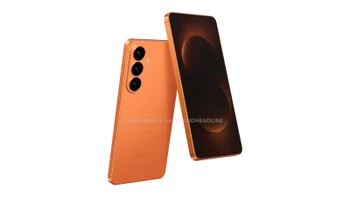
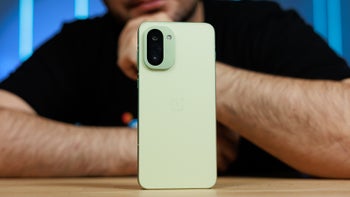
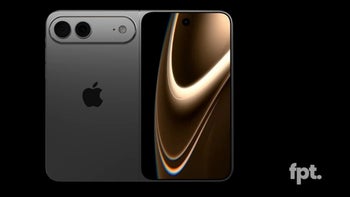



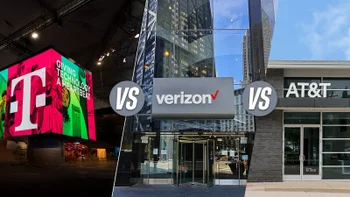
Things that are NOT allowed:
To help keep our community safe and free from spam, we apply temporary limits to newly created accounts: